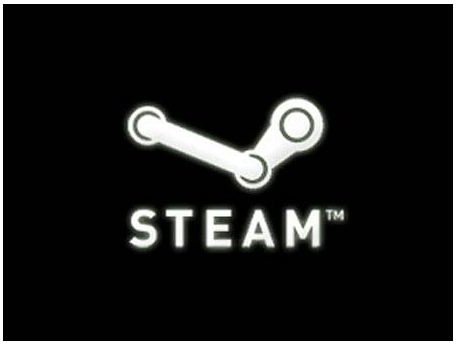Digital Distribution: Does it Matter?

False Prophets
Reading popular gaming press makes it easy to believe that digital distribution is quickly over-taking retail as the most popular method of distributing games in North America. Most recently the success of Steam and Direct2Drive made headlines thanks to massive gains in year-over-year sales during a period of time in which the overall industry has posted consistent double-digit reductions in sales figures.
The popularity of these stories is only natural. Digital distribution will probably one day have the majority of the market and it is, in comparison to retail, an exciting new way for developers to sell to gamers. But the positive press conceals the fact that the actual sales figures of digitally distributed games are dwarfed massively by retail sales. Even optimistic analysts acknowledge that digital distribution isn’t likely to gain even a fifth of the North American market until 2013.
Hardcore gamers will have a hard time understanding this. Anyone who regularly downloads games from Steam or Direct2Drive at major discounts probably wonders why the days of retail aren’t coming to a quicker close. There are good reasons, however, why digital distribution still remains a minority of the market, and they mostly have less to do with what hardcore gamers believe and more to do with what consumers want.
Games Aren’t Passive Media
The poster-child for how digital distribution can change an industry is obviously online music. In only a decade, the industry which once relied on sales of CDs and other physical media is now preparing for the possibility that 2010 will be the first year in which more than half of all music sales consist of digital copies. That is doubly impressive because the music industry spent most of the last ten years fighting tooth and nail against the rise of digital music.
But games are not music. Music has several traits which make it very well suited for digital distribution including file size, cost per track, and the ease of demoing. One less commonly noticed trait, however, is the fact that music is a passive product. A person can listen to music while doing just about anything. This means that even the most casual listeners often build music libraries which number in the thousands or tens of thousands of tracks. This also means that users do not link their use of past music to their consumption of new music. A person who just bought a new album is unlikely to feel that they need to “finish” it before buying another one.
Games, however, require active participation. It doesn’t make much sense to buy five games at once because games usually engage the player one or perhaps two at a time. They have a definitive end which requires the gamers full attention to reach. Even if games were as cheap as albums on iTunes it is doubtful that consumers would purchase more than they felt they could finish in a reasonable period of time. There are ways to counter-act this, as Steam’s weekend deals have shown, but it is a major limiting factor on the sales of digital games.
Storage Space is Limited
Modern games are massive. The Sims 3 takes up about 5.5 gigabytes of space, Crysis weighs in at 6.1 gigabytes and Fallout 3 comes in at a whopping 11 gigabytes without the DLC. Even in today’s era of incredibly inexpensive mechanical storage these numbers are not insubstantial. The Steam Hardware Survey indicates that most computers have less than 500 gigabytes of total hard drive space and 44% have less than 250 gigabytes. Having just five or six games installed can take up a large percentage of the total hard drive space available on these systems.
This problem is compounded by the lack of a physical counter-part to the digital copy. Not all digital distribution storefronts make it easy for a consumer to re-download a copy at any time. Even those who do, such as Steam, require that the user re-download the title. This means that users who are running out of hard-drive space are faced with two choices. They can either delete some games and hope they can re-download them if they wish to play them later or they can attempt to backup the data onto an external drive or disc. The situation is even worse on consoles, where hard drives are extremely expensive and backing up data is extremely difficult.
Backing up data isn’t hard for the tech-savvy people most likely to label themselves gamers. But to those who are less technically talented it can be an imposing process. Worse, it requires that the user remember where exactly they placed their digital backups on the physical storage. The consumers suddenly finds themselves having to find places to put physical copies, a problem which they would have had with retail - except instead of clearly labeled retail discs they are now dealing with external hard drives or DVD-Rs labeled with sharpies.
Digital Storefronts are a Mess

When you want to buy a box of Cherrios, where do you go? The grocery store. This could be an international chain like Wal-mart or a local supermarket. General Mills, the company which makes Cherrios, could conceivably try and sell the product to the consumer directly and cut out the middle man. But they don’t. Part of the reason they don’t is because it costs money to run a store. Another part of the reason is that having their own stores would limit the avenues through which they can sell.
Yet this logic seems lost on game publishers who, in order to increase the money made on each unit, eagerly restrict releases to a select few stores or their own digital storefronts. As vast as the selection on Steam is, it still lacks many high-profile titles because publishers like Electronics Arts wish to keep their most popular titles limited to their own storefront or those which provide Electronics Arts with the best terms. Anyone can go into Walmart, Target, or Gamestop and buy Call of Duty 4, The Sims 3, or Mass Effect, but those titles are limited in the digital forms. The problem is the same on both consoles and the PC.
An even bigger issue, however, is the lack of customer service. Digital titles are almost always non-refundable. All purchases are final. Impulse, run by the infinitely apologetic Stardock, is the only exception. Digital games cannot be resold, either, which means there is no way to recoup some cash if a game simply turns out to be bad. These are issues not faced with most retail copies. Once a consumer is burned by the lack of returns they will probably be much less inclined to buy from a digital store in the future.
The Big Question
These are just three reasons why the rise of digital distribution will be slower than many anticipate. As exciting as the possibilities are to developers, publishers, and gamers, a question must be answered - why would an average consumer want to buy a digital copy over a retail one? At present the responses to that question are limited, and so the growth of digital distribution will be limited.
